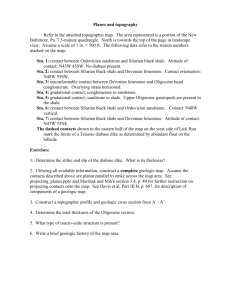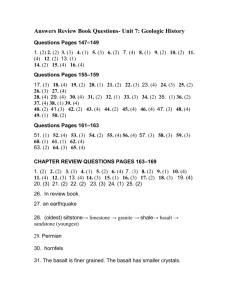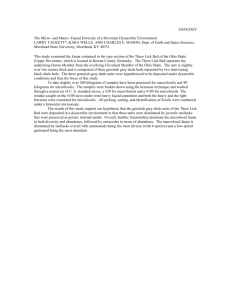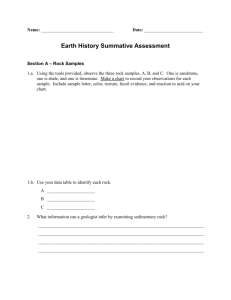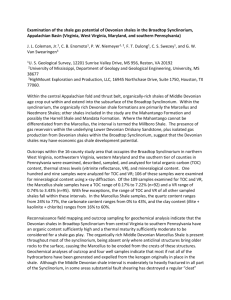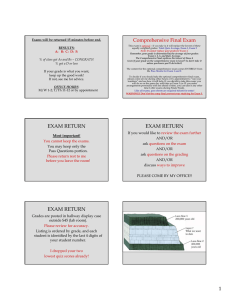devonian of the arabian peninsula
advertisement
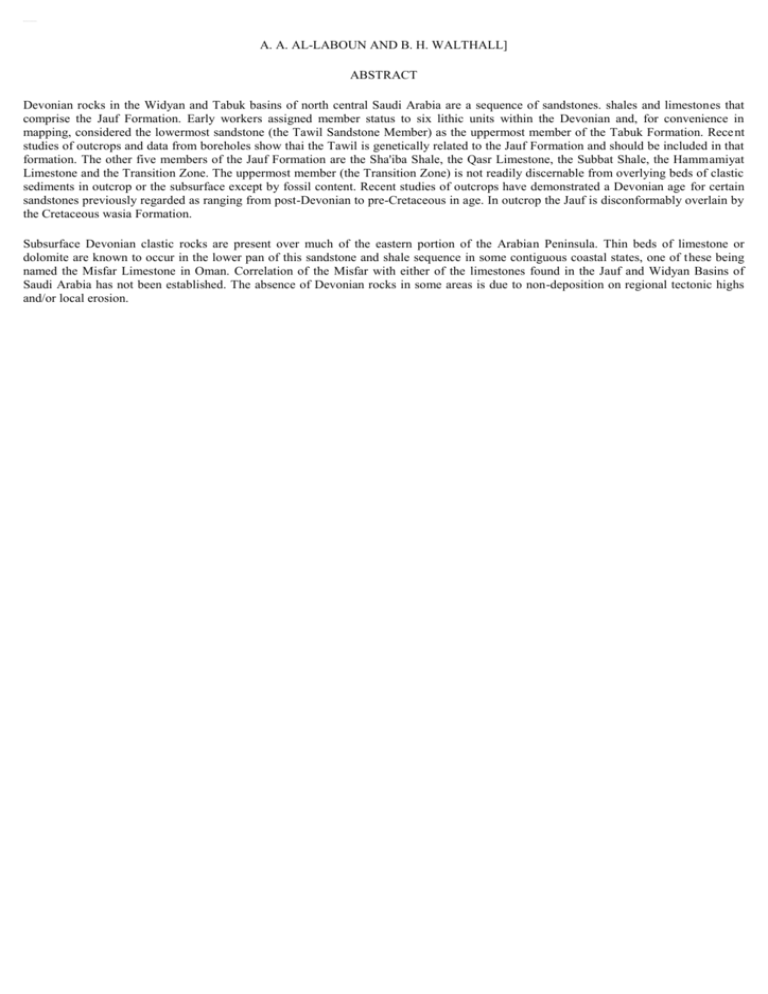
THE D EVONIAN OF TH E ARABIAN P ENINSU LA A. A. AL-LABOUN AND B. H. WALTHALL] ABSTRACT Devonian rocks in the Widyan and Tabuk basins of north central Saudi Arabia are a sequence of sandstones. shales and limestones that comprise the Jauf Formation. Early workers assigned member status to six lithic units within the Devonian and, for convenience in mapping, considered the lowermost sandstone (the Tawil Sandstone Member) as the uppermost member of the Tabuk Formation. Recent studies of outcrops and data from boreholes show thai the Tawil is genetically related to the Jauf Formation and should be included in that formation. The other five members of the Jauf Formation are the Sha'iba Shale, the Qasr Limestone, the Subbat Shale, the Hammamiyat Limestone and the Transition Zone. The uppermost member (the Transition Zone) is not readily discernable from overlying beds of clastic sediments in outcrop or the subsurface except by fossil content. Recent studies of outcrops have demonstrated a Devonian age for certain sandstones previously regarded as ranging from post-Devonian to pre-Cretaceous in age. In outcrop the Jauf is disconformably overlain by the Cretaceous wasia Formation. Subsurface Devonian clastic rocks are present over much of the eastern portion of the Arabian Peninsula. Thin beds of limestone or dolomite are known to occur in the lower pan of this sandstone and shale sequence in some contiguous coastal states, one of these being named the Misfar Limestone in Oman. Correlation of the Misfar with either of the limestones found in the Jauf and Widyan Basins of Saudi Arabia has not been established. The absence of Devonian rocks in some areas is due to non-deposition on regional tectonic highs and/or local erosion.


